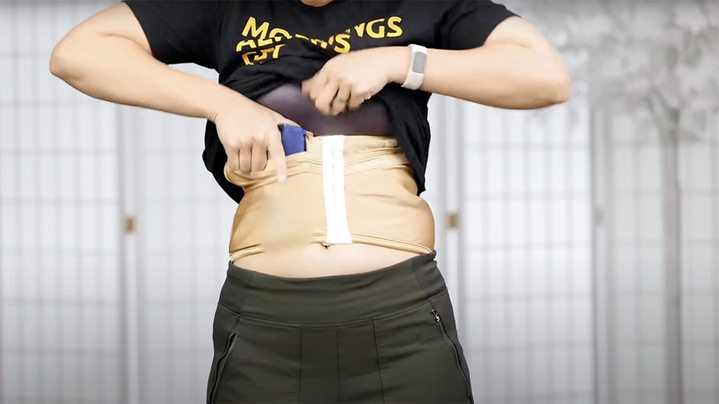Interest in appendix carry has absolutely exploded in recent years. And with new users come new shooters facing new and unique challenges. Concealed carry of any type always creates situations or challenges unique to the individual. So with some content created by PHLster Holsters, here’s six of the most common appendix carry mistakes many make when beginning their EDC journey.
Top 6 Appendix Carry Mistakes
1. Giving Up Too Soon
All new actions or processes take time, right? You’ll often hear it takes 10,000 repetitions to master any action. But when it comes to a new carry technique, many gun owners bolt at the first sign of discomfort. So if you really want to master the appendix carry, give it some time. The “juice is worth the squeeze.”
2. Using a Belt That is Too Stiff
If you’re belt is too stiff, it creates gapping or even a holla-hoop effect, inhibiting grip and negatively impacting concealment. It will also likely make you develop a hot spot, where the gun tips away and the muzzle digs into the body. Your belt should be stiff vertically but maintain flexibility as it envelops the body.
Advertisement — Continue Reading Below
3. Not Using Concealment Features Properly
Items like wings and wedges, used in conjunction with pressure, bring specific areas of the gun in tight to the body. A wing works with the belt to bring the grip/top area into the body. A wedge, typically made of foam, pushes the top of the gun back into the body. It also aids in eliminating hot spots and making the carry more comfortable.
4. Placing the Gun Too Low or in the Wrong Place
All bodies exhibit natural peaks and valleys. So body type goes a long way in determining optimal carry techniques. Placing a gun too low, for example, creates painful hot spots and prints the gun.
5. Carrying Short-Barreled Gun Without Longer Holster
This one likely sounds counter intuitive. Most people carrying a short gun from a small holster often makes the gun tip away at the grip. That places the muzzle into your body, creating a hot spot. The Keel Principle tells us more holster (like the keel of a boat) equals more surface below the waterline (our belt) to counteract the tendancy to want to tip. If you got a gut, go longer on the holster.
Advertisement — Continue Reading Below
6. Carrying Too Much Gun
Carrying a gun larger than the available concealment space creates challenges. It often leads to printing. The ratio between the height of the gun and the distance across the carrier’s body dominates the math here. You want the gun to occupy between 30-40-percent of hip-to-hip distance. So in this case, a bigger gun doesn’t necessarily equal better in terms of carry.
For more info, visit phlsterholsters.com.
























